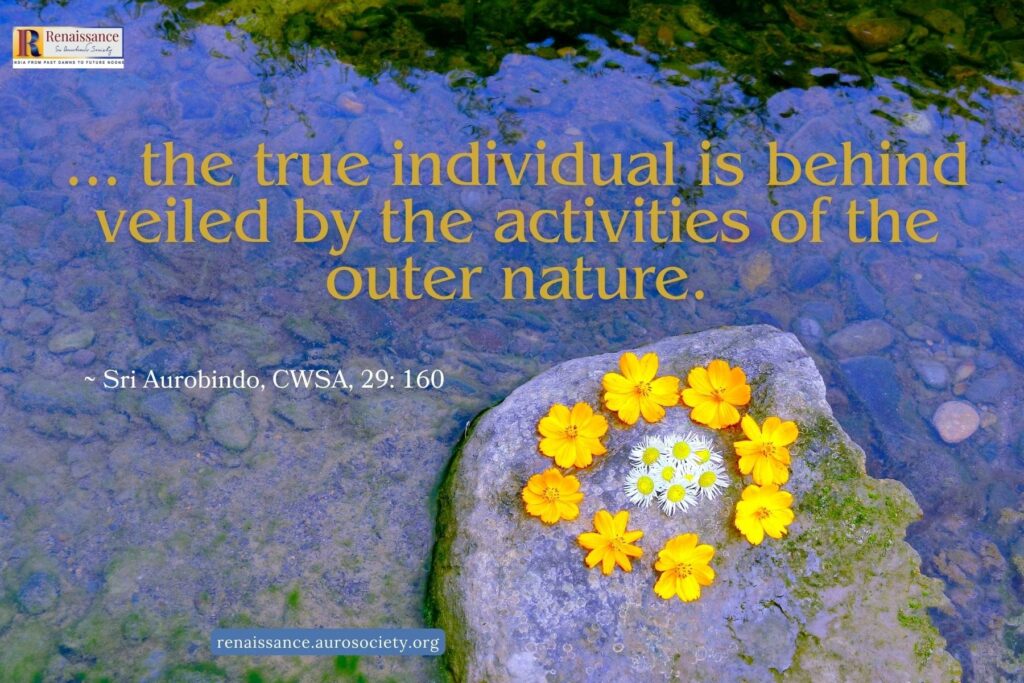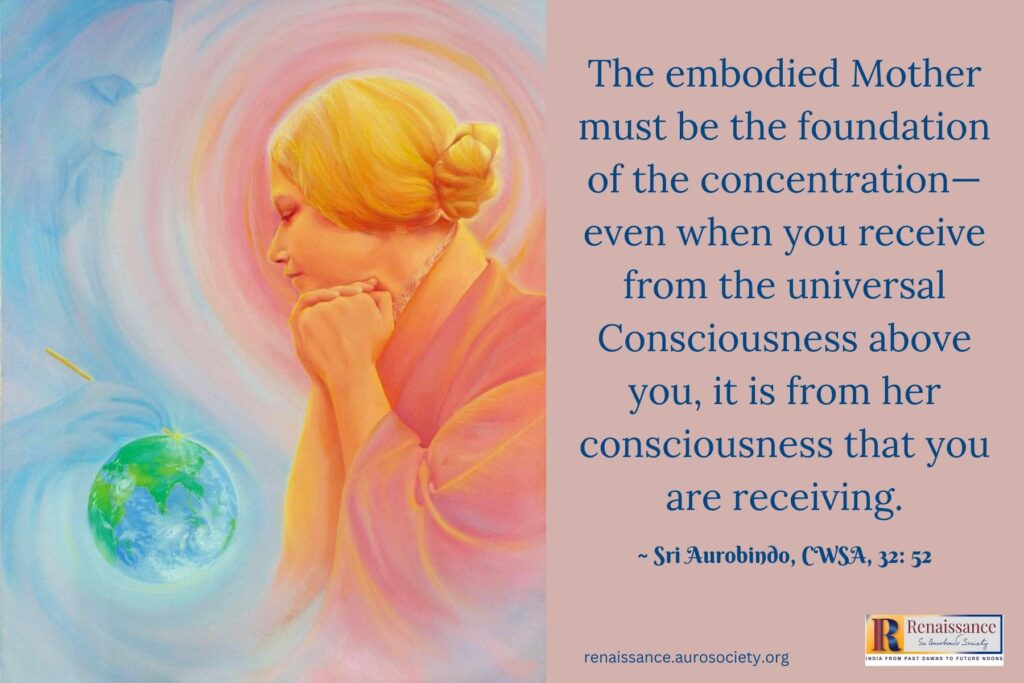Editor’s note: We present an excerpt from ‘Psychic Education, a Workbook‘ written by Neeltje Huppes. Based on the writings of Sri Aurobindo and the Mother, the book is published by Sri Aurobindo Education Society, New Delhi. In addition to the relevant theoretical discussion, the book includes helpful worksheets and checklists for educators.
The book consists of two parts – ‘Self-Preparation’ and ‘The Integral Classroom’. We have selected the following excerpt from a chapter titled ‘Evaluation and Assessment’ from the second part. This chapter emphasises the need for a change in the evaluation approach commonly used in our mainstream classrooms. The author also includes a detailed and practical developmental assessment model which is more aligned with Integral Education approach.
Interested readers can purchase this book from HERE.

Evaluation and Assessment
In most classrooms the content of teaching is determined by the examinations. To achieve good exam-results students are not allowed to devote much time to areas of their own particular interest, because that would mean less time for their regular studies. Another area that is neglected due to the pressure of preparation for examinations is the development of the faculties and qualities. This practice of forcing the same content on all the students is harmful. In one of his essays on education, Sri Aurobindo writes:
To force the nature to abandon its own dharma is to do it permanent harm, mutilate its growth and deface its perfection. It is a selfish tyranny over a human soul and a wound to the nation, which loses the benefit of the best that a man could have given it…
~ CWSA Vol. 1, p. 384
We have to muster the courage to strike a balance between the demands of the Board Examination and the yearning of our soul. We have to allow and help each student to fulfil his ‘dharma’.
The previous chapter [in the book] shows that it is possible to make significant changes in the content of learning. And through implementing a minimum common syllabus, the system can also enable a student to pass the examinations. If we want Integral Education, then changes in the assessment procedures are also inevitable. This chapter concentrates on that.
Why change the assessment procedures?
Most of us have experienced that it requires continual effort to come in contact with our psychic, to contact the presence of the Divine within us. Why is this so? One important reason is that the society is not soul-oriented and pulls us in the other direction.
Present day society does everything to make us believe that we are happiest when we possess the maximum. Similarly, in schools, students, parents and teachers are made to feel that the main aim of education is to obtain the highest possible marks. In some schools only those who score above 90% are considered “good students”. This almost forces students to close the door to the inner worlds.
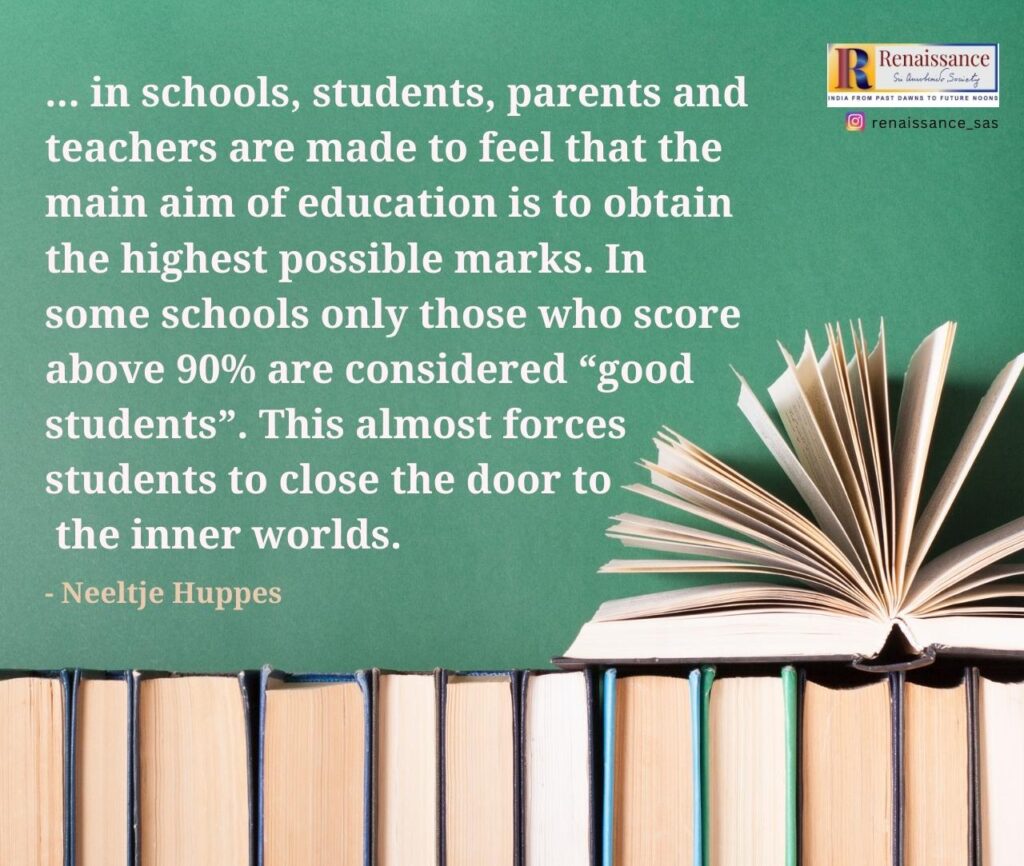
Another unfortunate by-product of exams is that they have become a stick to make children study. Assessment is very often used to coax children into action. In 2000, when the Central Board of Secondary Education made it known that it wanted to abolish the Board examination of class X, the biggest opposition came from the teachers, saying, “How will we make the students study when there isn’t an examination any more?”
We all know what an important role tests play in a child’s life. It is our task as Integral Education teachers to make a shift in assessment procedures, so that a student’s life is not dominated by them. Integral Education asks for assessment procedures that are based on a developmental model. In integral schools assessment has to be diagnostic and has to create self-awareness.
There is so much eagerness and beauty in a growing child.
Just observe a few young children when they are on their own. They are all the time busy with something, exploring, discovering, experimenting, repeating; in short a constant learning is taking place. An educator has the wonderful task to guide this process, to offer certain inputs, to help the children see certain structures so that they can grow to the maximum of their potential.
Growing as much as you want in a certain direction, dreaming of a lofty aim in life is most of the time answered with “but first you have to get high marks”. Even if it is true that children need good marks to enter a good college, it would make such a qualitative difference in a child’s life, in the atmosphere of the school, if they were allowed to pursue their svabhāva and carry out their dreams. Most of them would be responsible enough to take care of their studies because they know what is needed to fulfil their aim and take an exam as one of the hurdles that they have to overcome to realise their aspiration.
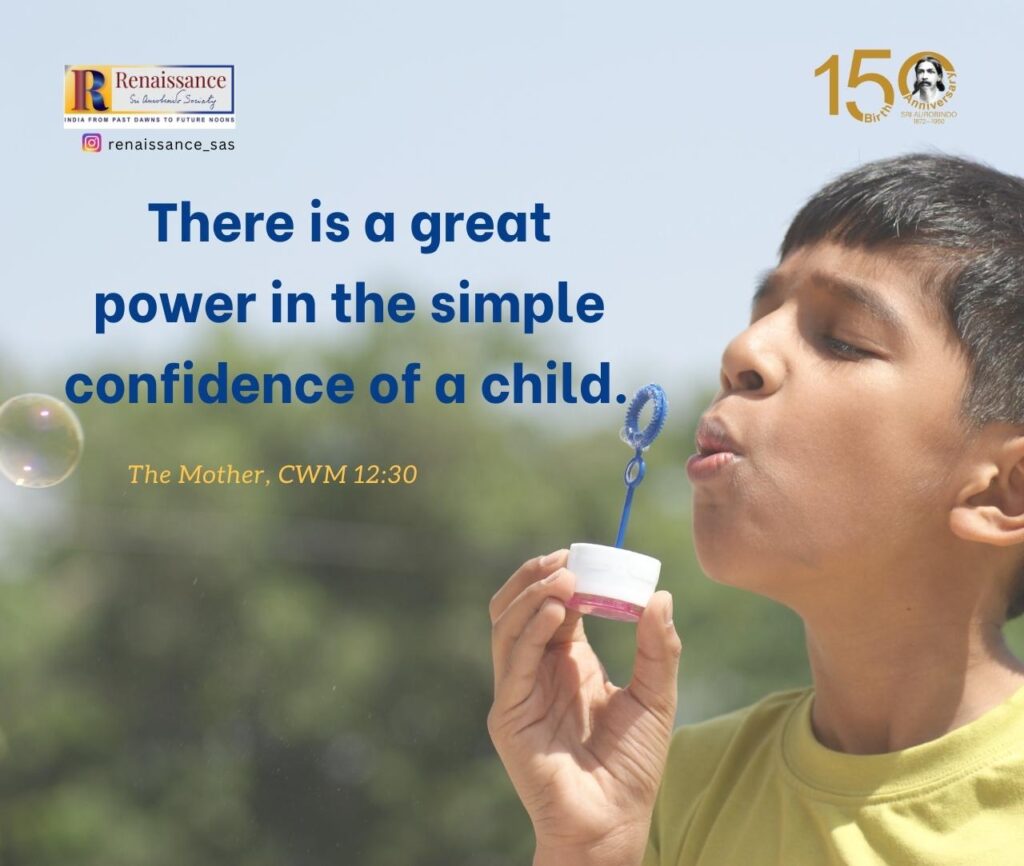
Read:
Why a New Education for Future: Words of the Mother
What does developmental assessment mean in practice?
- We need assessment that informs the teacher about what a student is able to do. It should help diagnose what he or she still needs to understand better. This information is not meant to rank the child and pronounce a judgement. It is meant to help the teacher to be a better guide. The aim is to identify the next goals in the learning process of a child.
- We need assessment that gives positive feedback and helps the student to build a noble character.
- We need assessment in which the student participates. A student who participates in the assessment process will have to become aware of his responsibility regarding his own development and his role in the society… It builds confidence. For older students this means that they themselves decide the next step in the learning process in consultation with the teacher.
We need assessment that identifies the learning victories and learning frustrations in order to help a student understand his special gifts. It should help him in developing these gifts to greater perfection. It must also help him understand the how and why of his limitations and lend support in his effort to overcome them.
- We need assessment that is non-judgemental so that it does not create fear of failing. Assessment need not make the student shrink from the outcome. Rather it should emphasise — “you are the master of your own learning process and you can make the difference”. This encourages students to give their best, and to try out various possibilities without having to face threatening consequences. It helps them to be honest and objective about their own performance.
- We need assessment procedures that are individualised and allow different tasks/tests for different students. This facilitates the blossoming of an individual’s uniqueness. It helps a child to become aware of personal capacities.
- We need assessment that welcomes and respects a student’s self-evaluation. Self-evaluation is one of the best tools for creating self-awareness. And self-awareness is so essential for deciding one’s aim in life. It is critical for the discovery and emergence of the psychic being.
Integral Education requires assessment that is in harmony with the “principles of true teaching”.
It must be based on developmental needs and not on ranking. It must be diagnostic, individualised, non-juddgemental and participatory. Such assessment should foster self-understanding and give positive feedback. And it must facilitate greater self-awareness and self-discovery.
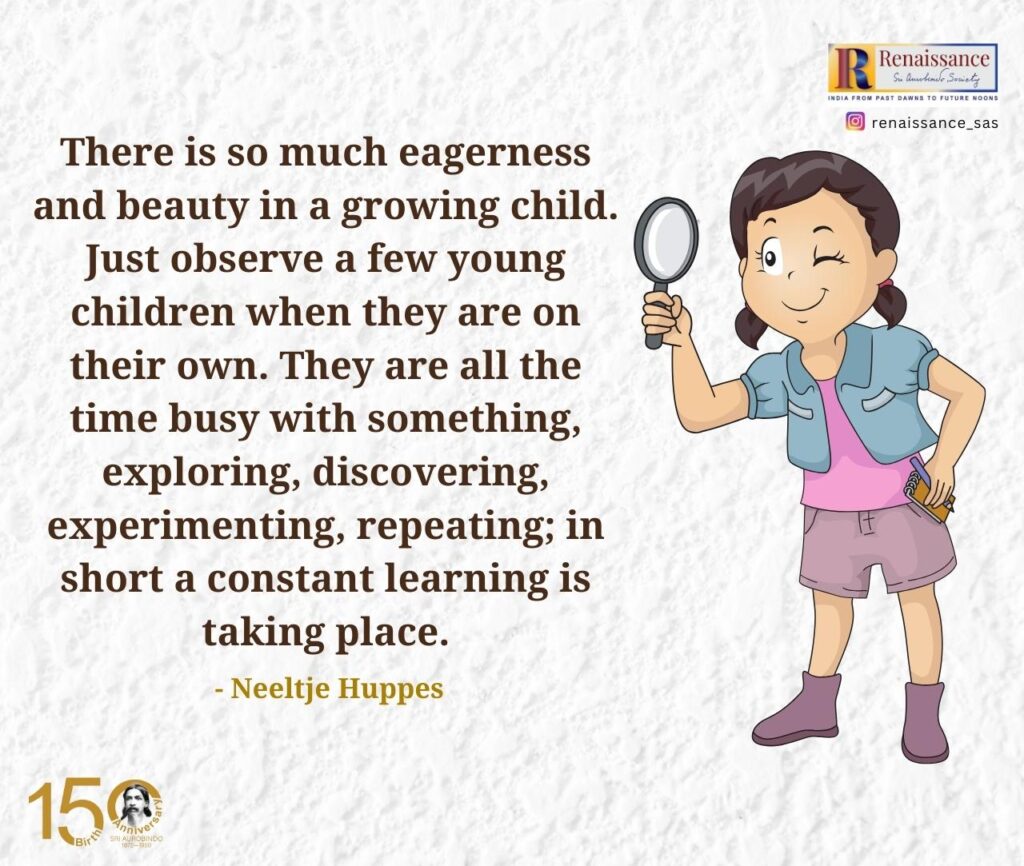
How can such assessment be implemented?
Since assessment in the integral classroom is development-based it is best to have a continuous evaluation based on observation of the students. This observation is meant to create an inner awareness in the teacher about each of the children under her care. She is thus able to give the right guidance when a child comes to her for help. This can serve the development needs of the students.
The teacher can also observe students in order to identify and analyse the achievements of a particular student. The amount of individual attention from the teacher will decrease when the number of children increases. But even in a classroom of thirty children or more, it is possible to keep track of individual children by making it a habit. After an observation, the teacher can simply jot down a few keywords next to the student’s name.
Assessment through observation
This observation can be done in three ways with three different goals in mind:
- Daily — Make it a point to observe quietly four or five children while they are working on their own. If you are a subject teacher and have at least four different classes during a morning, you could limit the observation to only one or two children per period. Such observation can be development-based… It can also be diagnostic. In that case, it is directed towards understanding learning strengths and/or learning difficulties.
- At least once a week — Do an activity with a small group of children, while the other children are engaged in something else. This is a good method for finding out unique features of a child’s development and his learning style. It is also good for getting insight into group dynamics. One often comes to know the nature of the students in a very direct way. Such observation can have developmental as well as diagnostic aims.
- Pupil tracking — Observe a child for a week or so to diagnose some specific learning difficulty. This should give you enough information to go on to the next stage of helping the child to overcome the difficulty.
Reduce the number of tests
Assessment through observation does not ask for any special assessment task or test. It is a good way to reduce the number of tests.
It gives a teacher a lot of information about a child’s learning process, learning capacity and uniqueness of personality. In fact, with younger children it is the only assessment that is really needed to guide the child effectively in his development. It can give you enough information for writing a report on his progress. You can easily proceed in this way up to standard V without ever giving a test.
I find tests an obsolete and ineffective way of knowing if the students are intelligent, willing and attentive. A silly, mechanical mind can very well answer a test if the memory is good and these are certainly not the qualities required for the man of the future…. To know if a student is good needs, if tests are abolished, a little more inner contact and psychological knowledge for the teacher.
~ The Mother, CWM Vol. 12, p. 201
It is important that you learn to refine your observation skills and become aware of the different aims observation can fulfil….
The do’s and don’ts for self-observation also apply to your child-observation. It has to be non-judgemental, full of warmth and respect.
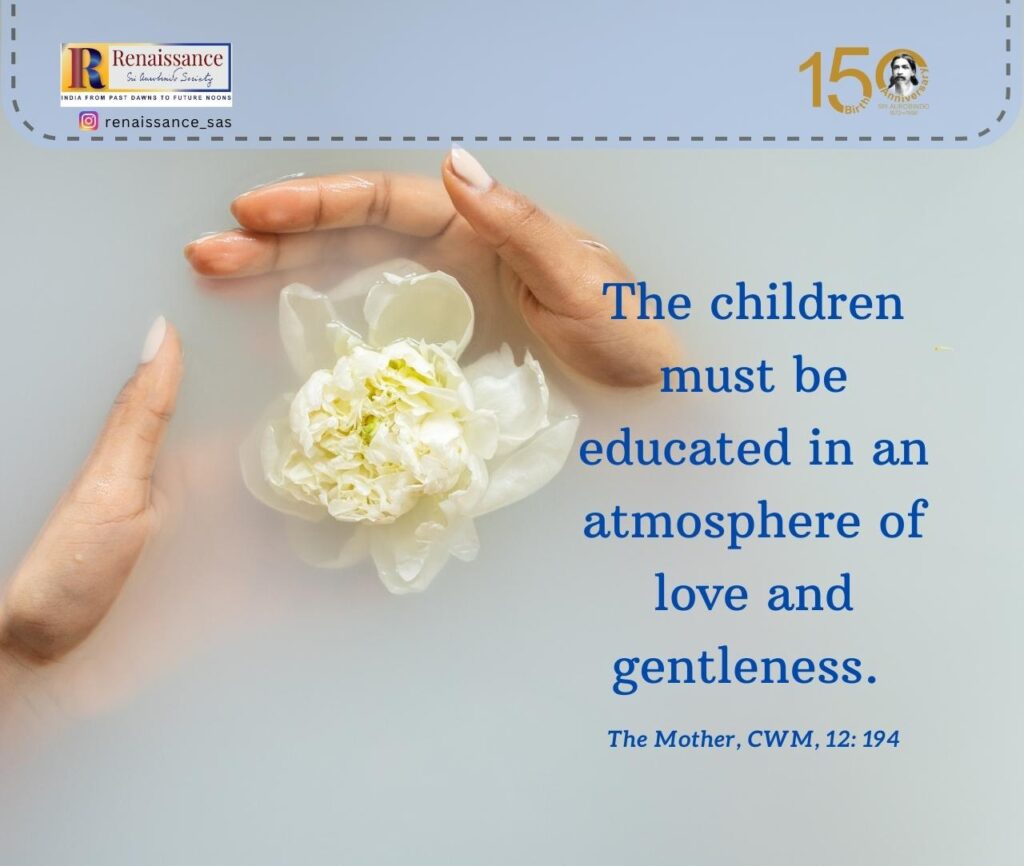
As long as you feel that you have to form an opinion about a child, your observation is not yet pure enough. Even diagnostic assessment should not lead to an opinion like, “Poor in multiplication.” Such a judgement does not lead to better results.
The outcome should be an observation like, “This child is confused while multiplying 2 and 3 digit numbers because the concept of place value is not clear.” The next step is to make the student aware of this gap in his comprehension. And then suggest some extra practice tailored to his needs so that he can master the concept of place value . It is not opinionating, but understanding from the heart that is needed for child-observation.
It is essential to realise that you can observe children from a different “I”-location.
It makes a lot of difference if you observe a child with your “I” located in your mind or in your heart. If a psychic opening is there while observing, you will do wonderful work and may get clear indications from within of how to help the child best.
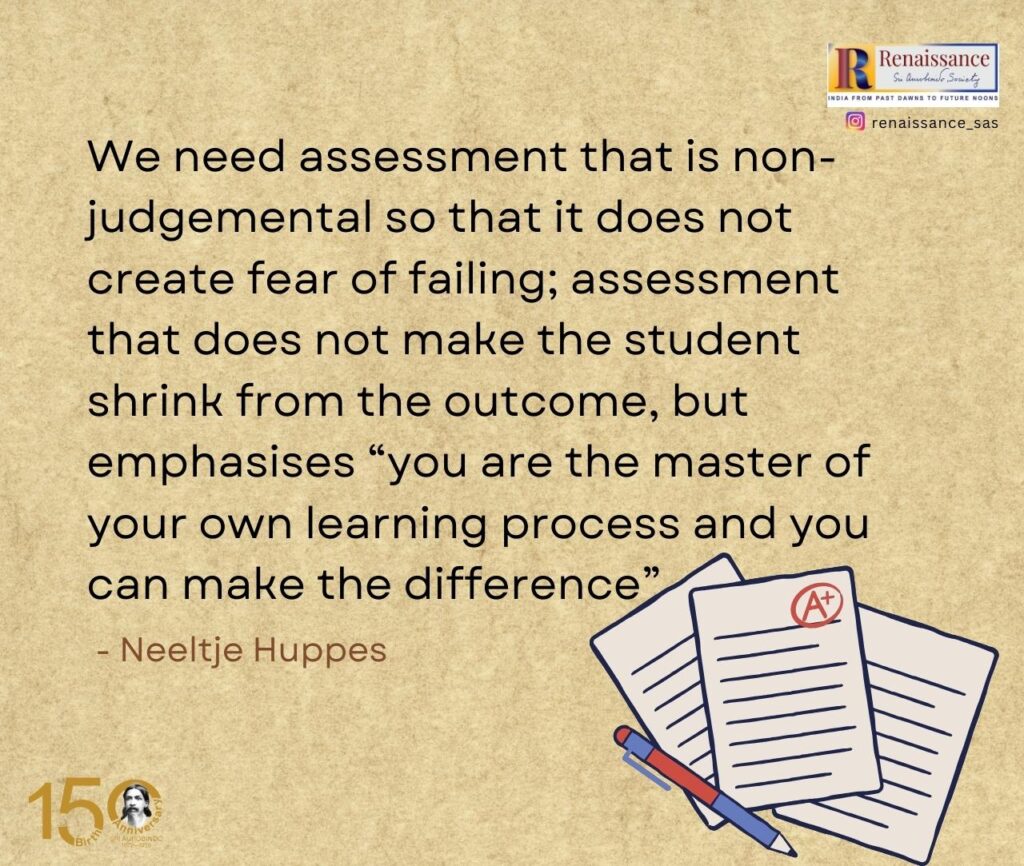
How does a teacher assess students in the higher classes?
Child-observation is to continue also in the higher classes. It gives you insights that you can never get from a formal assessment task. Along with observation (because development of the whole instrument is the aim), it is important to have a large variety of assessment procedures. Assessment means much more than checking if the student has learnt a number of chapters from the book.
Assessment has to be so varied that it helps the student as well as the teacher keep track of his mental, vital and physical development and progress.
Different assessment procedures which require a variety of tasks also makes learning more enjoyable. If you do this well, you will see that the regular pen and paper test will form only 10% of the assessment procedures. At any time you must have clarity about what you assess and how you assess. For instance, if a child gives a speech, is the assessment on the content of the subject he talks about, or on the way he gives his talk or on both?
Always be as specific as possible about what you are going to assess and inform the students well. When you asses a child let your comments include always what was good. And let it give the individual student an encouraging insight into how things could be done still better.
When it comes to certain capacities and qualities, like generosity, perseverance, any assessment, any judgement is out of place.
If a student knows he will be assessed on these, he might try to ‘show off’. Yet it is the task of the teacher, through unconditional encouragement, to help foster these qualities and to provide opportunities for strengthening qualities. We have to get used to the fact that in the integral classroom important areas of a child’s development have to come to the foreground without ever being assessed.
Also Read:
Educating the Vital – Arts Education for Inner Harmony (Video)
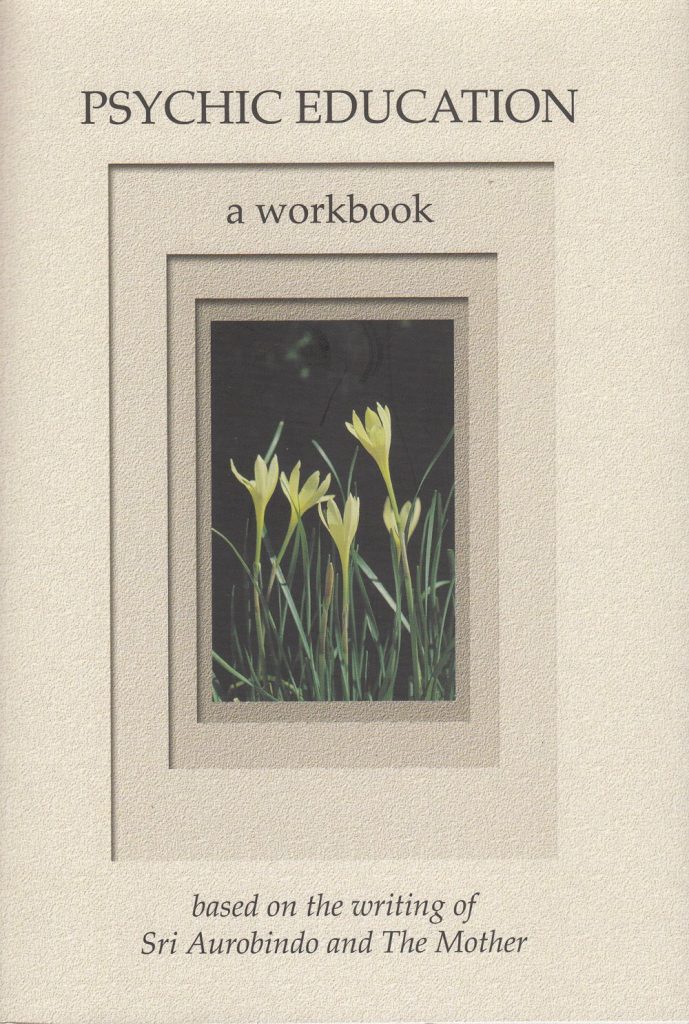
To read more about Assessment and Evaluation in Integral Classrooms and about Psychic Education, read Neeltje Huppes’ book. Available at SABDA.

~ Design: Raamkumar and Biswajita Mohapatra


